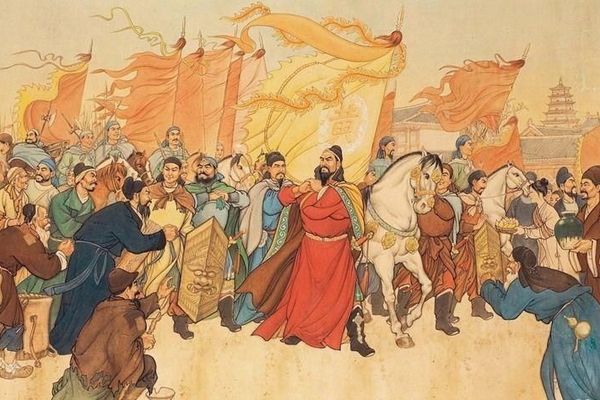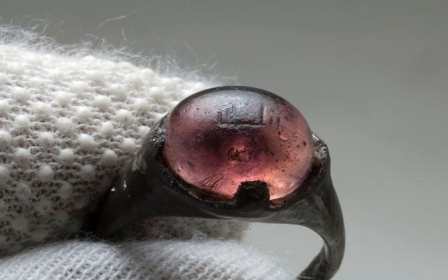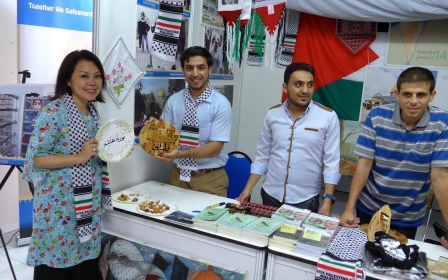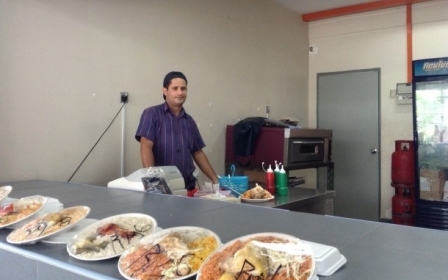The Chinese through Abbasid eyes

They were keen and curious observers. More than a millennium ago merchant-informants and officials at the service of the Abbasid caliph, from Baghdad or Basra, put to paper eyewitness accounts of North Europeans (Vikings), Indians, Chinese and people from today’s Cambodia, Indonesia and Sri Lanka. The Abbasid Caliphate ruled all of West Asia and North Africa from 750 AD until about 1000, when it began to weaken.
“Baghdad was one of the biggest cities in the world,” says Dr Maaike van Berkel, associate professor in Medieval History at Amsterdam University. Van Berkel, a specialist in the Abbasids’ empire, recalls that the City of Peace, as it was called, had probably around half a million inhabitants. “But that’s still gigantic and beyond compare to the towns and cities at the time in Europe. Baghdad was an important economic and trade centre. There were commercial contacts with Charlemagne’s empire in Europe but even more with China, India and Central Asia.”
“From all over the Middle East people came to Baghdad; it was the most important religious, intellectual and scientific centre of that part of the world,” Van Berkel says. “Geographers knew in detail about the Dar al Islam (home or abode of Islam), a vast area that extended from what is now Spain to Pakistan and Afghanistan. They mapped the roads and rivers, the cities, the natural environment, the administration, the people…. They were also pretty knowledgeable about India but much less so about Europe.”
The recently translated Accounts of China and India by Abu Zayd al-Sirafi and other chroniclers gives a fascinating insight into the interconnectedness and mobility of the Abbasid era. For today’s readers, removed in time and place, some of the writers’ observations may seem bizarre and implausible. But in most of their akhbār - credible reports of what they saw and heard - one can easily recognise modern Indians and Chinese.
Journalism of its day
Tim Mackintosh-Smith, who translated Accounts of China and India into English and who himself is an accomplished travel book writer, compares akhbār with today’s journalism and its style reminds him of an “online, interactive travel website”.
Abu Zayd wants to drive home that the Accounts do not describe a fantasy world, but are merely a portrayal of the truth as they percieved it. He claims to have “avoided relating any of the sort of accounts in which sailors exercise their powers of invention but whose credibility would not stand up to scrutiny in other men’s minds”. His motto is "the shorter the better", reminding us of today’s journalism’s slogan KISS: "keep it short and simple".
Abu Zayd’s travel accounts reflect the Arab-Islamic drive under the early Abbasid dynasty to explore eastward and especially to connect to China. In the Accounts’ introduction, the second Abbasid caliph and builder of Baghdad, Al-Mansour, standing at the bank of the river, is quoted as saying: “Here is the Tigris, and nothing bars the way between it and China!” Arab ships would sail eastward one season, when the winds blew that way, and back west when the mawsim – the Arabic word that in English became “monsoon” - caused winds to take the Arab vessels back home.
The main Abbasid terminal of the monsoon trade was Siraf in the Gulf, birthplace of Abu Zayd al-Sirafi, in what is now Iran. From Siraf ships crossed the Gulf to call at the Omani ports of Suhar or Muscat and continue to India, China, the Malay Peninsula, Java or even further. The main Chinese port was Khanfu, nowadays the megapolis of Guangzhou. While the Abbasid explorers discovered China, the Chinese were discovering the “West”, and their chroniclers described the maritime route to Iraq and to Bangda, as they called Baghdad.
Tang Dynasty 'socialism'
The apogee of the Abbasid caliphate coincides with the heydays of the Tang Dynasty in China (619-907). In the Accounts imperial China is painted as a highly organised and regulated society. The government cares for the wellbeing of its citizens. If a sick person is poor, “he is given the cost of his medicine from the public treasury”.
The citizens pay a fair poll tax when they reach the age of 18. Old people do not have to pay taxes but receive a pension. Every city has a school and a teacher and the children of the poor are fed from the public treasury. “The Chinese, whether poor or rich, young or old, all learn to form letters and to write.” It sounds like socialism avant la lettre.
Abu Zayd lauds the “admirable governance” of the Chinese. They have rule of law. Right is done “wherever it is due” and no blind eye is turned to “the misdeeds of those of high status”. A eunuch chief of finance controls the state finances. The state’s income consists of the poll tax and the exclusive rights of the ruler to sell salt and tea. The Arabs didn’t know tea before travelling to China. In the Accounts Abu Zayd describes tea as “a plant that they drink with hot water and that is sold in every city for large sums of money. To prepare it, water is boiled, then the leaves are sprinkled on it, and it serves them as an antidote to all ailments.”
The Arab travellers were amazed by how industrious the Chinese were. “Of all God’s creation, the Chinese are among the most dexterous at engraving and manufacturing and at every kind of craft. Indeed, no one from any nation has the edge on them in this respect.”
Clash of hygiene habits
But not everything was admirable in Arab eyes. They were horrified by the lack of hygiene of the Chinese. The Chinese use “only paper, not water, to clean their backsides after defecating” and do not clean their teeth and hands before eating. The Arab chroniclers were disgusted by some of the sexual practices of the non-Muslims. They couldn’t approve of the Chinese habit to have sexual intercourse with their women even when they were menstruating and of their highly organised prostitution. “The Chinese sodomise boys who are provided for that purpose and are of the same order as temple prostitutes.”
In some ways the Arab explorers lived in a better world than ours. While nowadays the rhinoceros is considered in India as a vulnerable species due to excessive hunting; the Arab chronicler reports that they are found “in large numbers in all Indian kingdoms”. He reports having eaten the flesh of the rhinoceros because “it is permissible for Muslims.” He is impressed by the strength of the rhinoceros. “No other animal equals it in strength. An elephant will run away in fear from a rhinoceros.”
Like in our times, political stability and trade never last forever. In the last quarter of the 9th century a rebellion weakened the Tang dynasty. Thousands of the foreign merchants in Khanfu/Guangzhou were massacred and direct Arab-Chinese trade came to a halt. However, indirect trade continued with Arab merchants buying, for example, Chinese porcelain in India.
A few decades after the Chinese rebellion and the massacre of Khanfu, the grip of the Abbasid caliph on the empire loosened. Van Berkel explains that the outer regions recognised the caliph only formally. It was exactly in this period of decline that a fellow traveller from Iraq, Abu Fadlan, undertook his voyage to the land of the Volga-Bulghars. He wrote about his encounters with new cultures, among them the Vikings, in his Mission to the Volga.
People like us
The akhbar arouse our fantasies and dreams about people in a bygone era who show an uncanny resemblance with humans in the 21st century. Ibn Fadlan’s Mission to the Volga inspired Michael Crichton’s novel Eaters of the Dead and the film The Thirteenth Warrior.
Viking-expert Nelleke Ijssennagger finds it ironic that some in Europe compare the Vikings to the fighters of the Islamic State or vice versa: the cruelty, the medieval savagery… “I think this is because they have no real idea about the Vikings, or about the Islamic State. Originally the Vikings had a very bad press. They raided some regions in Northern Europe, destroyed everything, and burned villages. Their bad reputation hides the fact that they were a well-organised people, in many ways very sophisticated.”
“Trade contacts in the early Middle Ages are still very much underestimated,” says historian Dr Karl Heidecker of Groningen University. “Numerous objects from the Middle East, Africa and even Afghanistan were encountered in Viking sites. Things circulated.” Heidecker stresses that this does not mean that North Europeans were in direct contact with the Afghans or the Chinese. Often things ended up in a certain place after a long journey, having passed through many hands
One of the biggest surprises of the Arab travel accounts is the sophistication of Vikings, Turks, Chinese, Indians and the Abbasids, more than a millennium ago. The Accounts paint an interconnected world, but also the transience of political might and relativity of human progress.
[1] Abu Zayd al-Sirafi, Accounts of China and India and Ahmed Ibn Fadlan, Mission to the Volga, in Two Arabic Travel Books (New York/London: New York University Press), 2014
Middle East Eye propose une couverture et une analyse indépendantes et incomparables du Moyen-Orient, de l’Afrique du Nord et d’autres régions du monde. Pour en savoir plus sur la reprise de ce contenu et les frais qui s’appliquent, veuillez remplir ce formulaire [en anglais]. Pour en savoir plus sur MEE, cliquez ici [en anglais].




